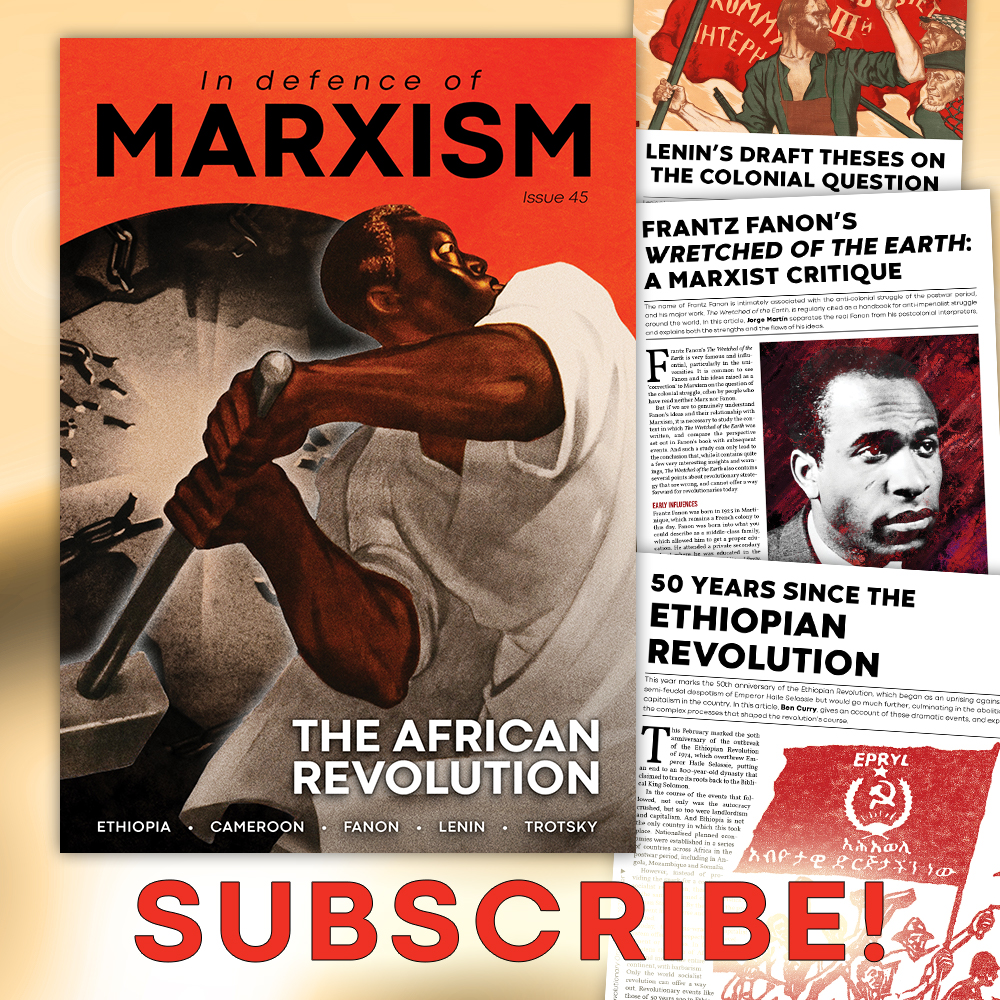The deepening crisis of capitalism is causing immense political instability across the world. In this context, a rise in the number of ‘authoritarian’ and ‘populist’ governments has provoked much discussion over the rise of ‘strongman’ politics. But what exactly does this mean? In this article, Ben Gliniecki considers the nature of the capitalist state and the concept of ‘Bonapartism’, as developed by Marx, in order to answer this question and provide a perspective for the impact of the class struggle on politics today.
For more on the Marxist view of the state, sign up for this year's World School of Communism in June. Over six days, there will be talks and discussions on over 20 topics, including on how the capitalist state acts as a tool for defending the present system of exploitation and oppression. Sign up now!
A common topic of discussion among bourgeois commentators today is the rise of so-called ‘strongman’ leaders. In recent years, it is said, a ‘democratic recession’ is producing increasingly authoritarian leaders who threaten the values of liberal democracy. This is a cause of great concern for the ‘responsible’ wing of the ruling class.
Last year, Gideon Rachman, the Chief Foreign Affairs columnist for the Financial Times in Britain, published a book called ‘The Age of the Strongman: How the Cult of the Leader Threatens Democracy Around the World’, sounding the alarm about the rising threat to liberal democracy.
In his book, Rachman groups together a long list of leaders into the category of ‘strongman’, including: Vladimir Putin, Recep Tayyip Erdoğan, Xi Jinping, Narendra Modi, Viktor Orban, Boris Johnson, Donald Trump, Mohammed bin Salman Al Saud, Benjamin Netanyahu, Jair Bolsonaro, Andrés Manuel López Obrador and Abiy Ahmed.
Rachman’s analysis concentrates on listing the things his catalogue of authoritarians superficially have in common: nationalism, a dislike of ‘global elites’, a cult of personality, their use of social media, and their tendency towards corruption, among others. What he avoids is any explanation of the fundamental processes that give rise to these regimes.
Rachman says that Putin’s regime in Russia, for example, is based on corruption and nationalism. But this explains nothing. Corruption and nationalism are present, to a greater or lesser extent, in every capitalist regime at all times. Why and how corruption and nationalism in Russia produced the Putin regime at a particular moment in history remains unaddressed.
Instead, what Rachman provides are surface-level snapshots of isolated, individual ‘strongman’ leaders, which reduce politics to essentially the product of the characteristics and whims of individuals. This not only obscures the important differences between regimes, such as that of Putin and so-called ‘populist’ governments such as that of Donald Trump; it also leaves us utterly incapable of drawing out any conclusions for the future, if we make the mistake of following Rachman’s lead.
What Rachman lacks is an analysis of the class struggle in each society, and on a global scale. Any attempt to understand the state and its political character without assessing the tempo and condition of the class struggle at a given moment will result in superficiality.
Karl Marx, on the other hand, studied the history and development of the class struggle, its trajectory, and the political forms it brings into being.
“The history of all hitherto existing society”, Marx and Engels write in The Communist Manifesto, “is the history of class struggles.”[1] The political regimes that will define the history of the period we are living through now are neither the products of media-savvy spin-doctors, nor presidents who bribed the right people. They can only be understood as the product of a particular stage in the class struggle.
In his own book, called The Eighteenth Brumaire of Louis Bonaparte, Marx analysed the rise to power of another ‘strongman’, Napoleon III, and the theoretical conclusions he drew remain an indispensable tool in understanding the nature of the state, and the perspective for so-called ‘strongmen’ today.
The Marxist theory of the state
Before we can grasp the political character of a particular regime, whether it is a liberal democracy or a dictatorial regime, we need to understand the role of the state in society.
The state is an instrument of class rule. It is owned and operated by the ruling class in any given society. Modern states, for example, are tied by a thousand threads to capitalist interests.
There is a notorious revolving door between business and government that ensures ministers and civil servants slide easily between government regulators and the companies they are supposed to be regulating. Big business lobbyists have direct access to government ministers at all times, using various forms of ‘persuasion’, including bribes and threats, to shape government policy in accordance with the interests of the bourgeoisie. The courts, prisons, police and army are used to defend the private property rights of the rich, while the rights of the poor to housing and food are either ignored, or conquered through class struggle.
Government ministers, top civil servants, judges, generals, police chiefs and other state functionaries are typically drawn from a narrow layer of society, raised and educated with the outlook of the capitalist class. In Britain, 65 percent of top civil servants attended elite and exclusive private schools, as did 65 percent of senior judges, 70 percent of generals, and 65 percent of senior ministers in the government.
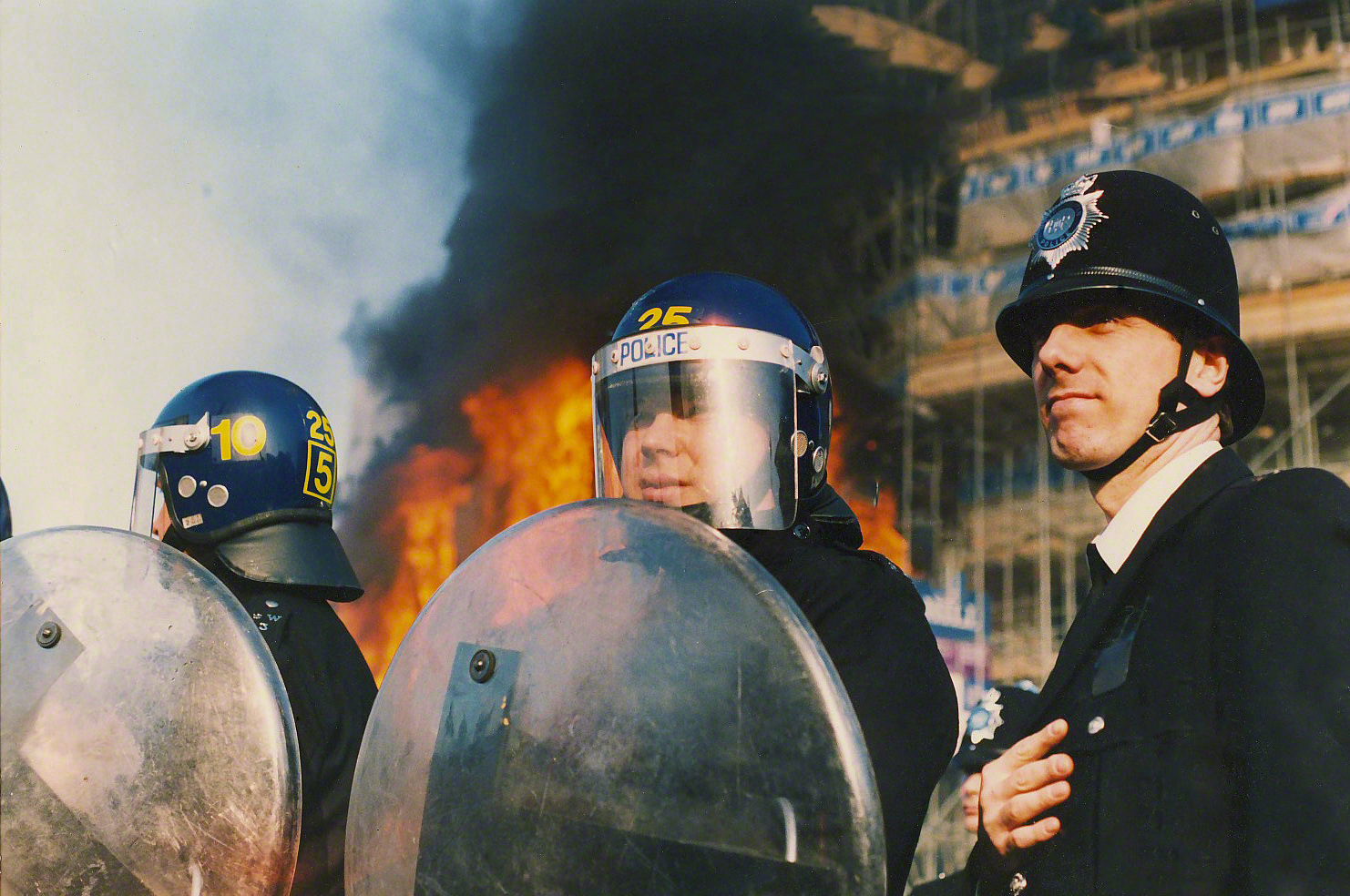 The state is an instrument in the hands of the dominant class / Image James Bourne
The state is an instrument in the hands of the dominant class / Image James Bourne
This relationship between the state and the ruling class is not unique to capitalism. In fact, the state has been an instrument of class rule since it first appeared on the stage of history, around 5,000 years ago. Ever since society became divided into exploiting and exploited classes, a state has existed to regulate the conflict between them that would have otherwise torn society apart.
As Engels explains:
“[The state] is the admission that this society has involved itself in insoluble self-contradiction and is cleft into irreconcilable antagonisms which it is powerless to exorcise. But in order that these antagonisms, classes with conflicting economic interests, shall not consume themselves and society in fruitless struggle, a power, apparently standing above society, has become necessary to moderate the conflict and keep it within the bounds of ‘order’”. [2]
However, far from being a neutral arbiter between the contending classes, the state is an instrument in the hands of the dominant class in society, to preserve its ruling position and property relations. As Engels explains, “The central link in civilised society is the state, which in all typical periods is without exception the state of the ruling class, and in all cases continues to be essentially a machine for holding down the oppressed, exploited class.” [3]
This is why state authorities have a legally sanctioned monopoly on the use of violence through the police, army, and prisons. And it is why Marx and Engels wrote that, “The executive of the modern state is but a committee for managing the common affairs of the whole bourgeoisie.”[4]
To successfully preserve property relations against class conflict, and to justify its monopolisation of violence, the state has to appear to stand above society, alienated from it to a certain extent. It must use majesty and mysticism to obscure its role as an instrument of the ruling class.
The feudal monarchs of Europe claimed to rule by divine right, chosen and guided by God. Modern ‘democracies’ on the other hand cloak themselves in the language of ‘the vote’, ‘human rights’, and ‘the Rule of Law’.
These ‘democratic’ trappings play a useful role for the capitalists. First, they allow the capitalist class as a whole to exert control of the fundamental mechanics of the state, through their hired representatives in parliament, the mass media, the judiciary, the vast state bureaucracy and the armed forces.
The brevity of the 2022 Truss government in Britain showed this plainly. The market reaction to Truss’ policies, alongside withering statements from capitalist institutions like the IMF, forced her from office within 44 days. It is enough to ask whether Liz Truss could have imprisoned her ruling class critics in response to realise the real relationship between the capitalists and their statesmen.
But in addition to this, bourgeois ‘democracy’ also gives the illusion of choice to the electorate, who can vote individuals and political parties in and out of power, without ever presenting a threat to the capitalist system. It adds to the myth that the state is neutral and stands above the contending classes in society.
This is why, all other things being equal, the most efficient type of state under capitalism is a democratic republic.
As Lenin explains: “A democratic republic is the best possible political shell for capitalism, and, therefore, once capital has gained possession of this very best shell it establishes its power so securely, so firmly, that no change of persons, institutions or parties in the bourgeois-democratic republic can shake it.” [5]
The monopolisation of violence and the alienation of the state from society are crucial to its effectiveness as a weapon for the ruling class. But under certain conditions those things can take on a life of their own. Engels explains:
“Exceptional periods, however, occur when the warring classes are so nearly equal in forces that the state power, as apparent mediator, acquires for the moment a certain independence in relation to both.”[6]
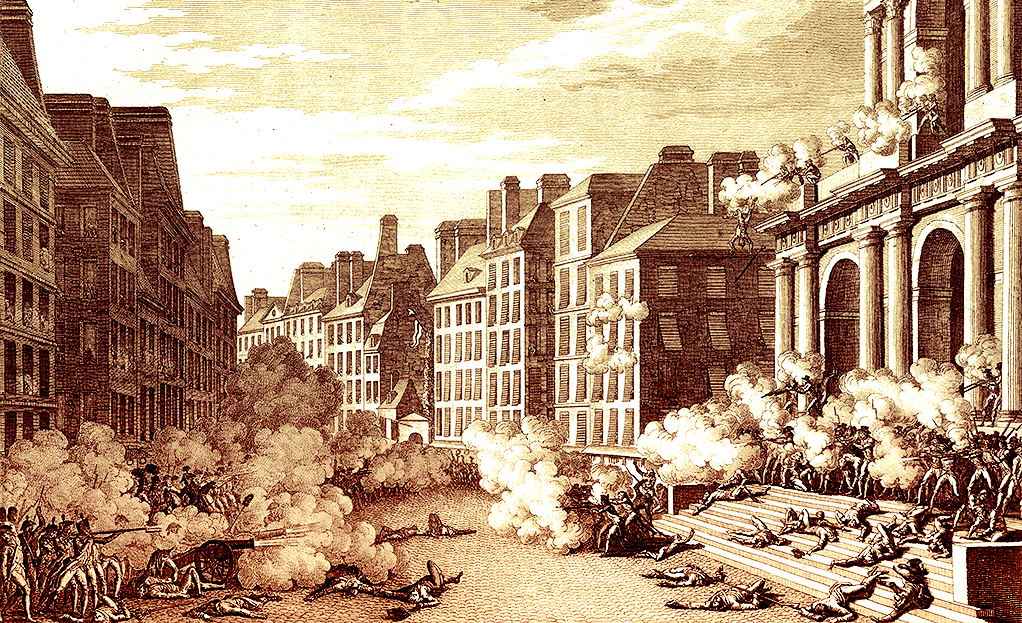 The bourgeoisie had called the masses into struggle in 1789, but having overthrown the monarchy, could not then decisively assert its control over the situation / Image: public domain
The bourgeoisie had called the masses into struggle in 1789, but having overthrown the monarchy, could not then decisively assert its control over the situation / Image: public domain
Like the Sorcerer’s Apprentice, the ruling class can find that it has conjured up forces it is no longer able to control.
For example, in 2000, Vladimir Putin became President of Russia and immediately jailed and exiled Vladimir Gusinsky, a media baron, bank owner, and real estate magnate, whose media outlets were critical of the President.
Putin then went after Mikhail Khodorkovsky, an oil baron, the richest man in Russia, and a political opponent. In 2003, Khodorkovsky was thrown in jail and his wealth and assets seized.
Rather than being the servant of Russia’s ruling class, Putin instead appears as its master. This phenomenon, of the state apparatus raising itself above the rest of society with a ‘great leader’ at its head, is what Marx called ‘Bonapartism’.
Bonapartism
This is not the first time that the state, a supposed servant of the ruling class, has turned on some of its former masters. The archetype of this phenomenon was Napoleon Bonaparte himself.
Napoleon came to power in the wake of the French Revolution. More specifically, he came to power during its ebb tide. Starting in 1789, the alliance of the bourgeoisie, the semi-proletarian masses of Paris and the French peasantry had put an end to the monarchy, given land to the peasants, and begun waging war on feudal Europe, clearing the road for the development of capitalism.
The revolution’s Committee of Public Safety unleashed the Jacobin terror against the counter-revolutionary forces trying to restore the monarchy. Enthused by their success, however, the Paris masses started to go further. They took the slogan of ‘Liberty, Equality, Fraternity’ at its word. They began to take measures against private property.
This was the highest point of the revolution, but it was one from which the bourgeoisie and the peasantry recoiled. More numerous than the Paris ‘mob’, they began to swing the pendulum the other way. First, Robespierre and the Committee of Public Safety were overthrown, and replaced by the Directory, which directed a new, ‘white’ terror against the most revolutionary elements, demanding that ‘order’ be restored, by which they meant the newly established bourgeois order.
The bourgeoisie had called the masses into struggle in 1789, but having overthrown the monarchy, could not then decisively assert its control over the situation. The struggle was deadlocked, and brute force became the deciding factor.
Caught between royalist plots and uprisings, such as the Chouans in the West, and the threat of a Jacobin resurgence in Paris, the bourgeoisie longed for ‘stable government’ and an end to ‘anarchy’ once and for all.
Napoleon, fresh from his military successes and commanding the loyalty of the army, which was drawn primarily from the peasantry, was the saviour many had been looking for. The Abbé de Sieyès, himself a leading member of the Directory, Joseph Fouché, the Minister of Police, and Charles-Maurice de Talleyrand, the Foreign Minister, invited Napoleon to use the army to overthrow their own government on 18 Brumaire, year VIII of the Republic (9 November 1799).
Once in power, Bonaparte balanced between the deadlocked classes. To the bourgeoisie, he promised order and an end to riots and revolutionary disturbances. To the soldiers and the masses, he promised to save the revolution from monarchist conspiracies. All the while, he raised himself and his apparatus of force above all classes in society.
Despite the demagogy, which was often contradictory and euphemistic as he tried to appear all things to all men, Napoleon defended the system of private property established by the bourgeois revolution.
He had no choice in this, because his base of support was the peasantry, which made up the ranks of the army. They had no interest in the demands of the Paris semi-proletarians, and wanted to preserve the private ownership of the land they had been granted by the revolution against the monarchy.
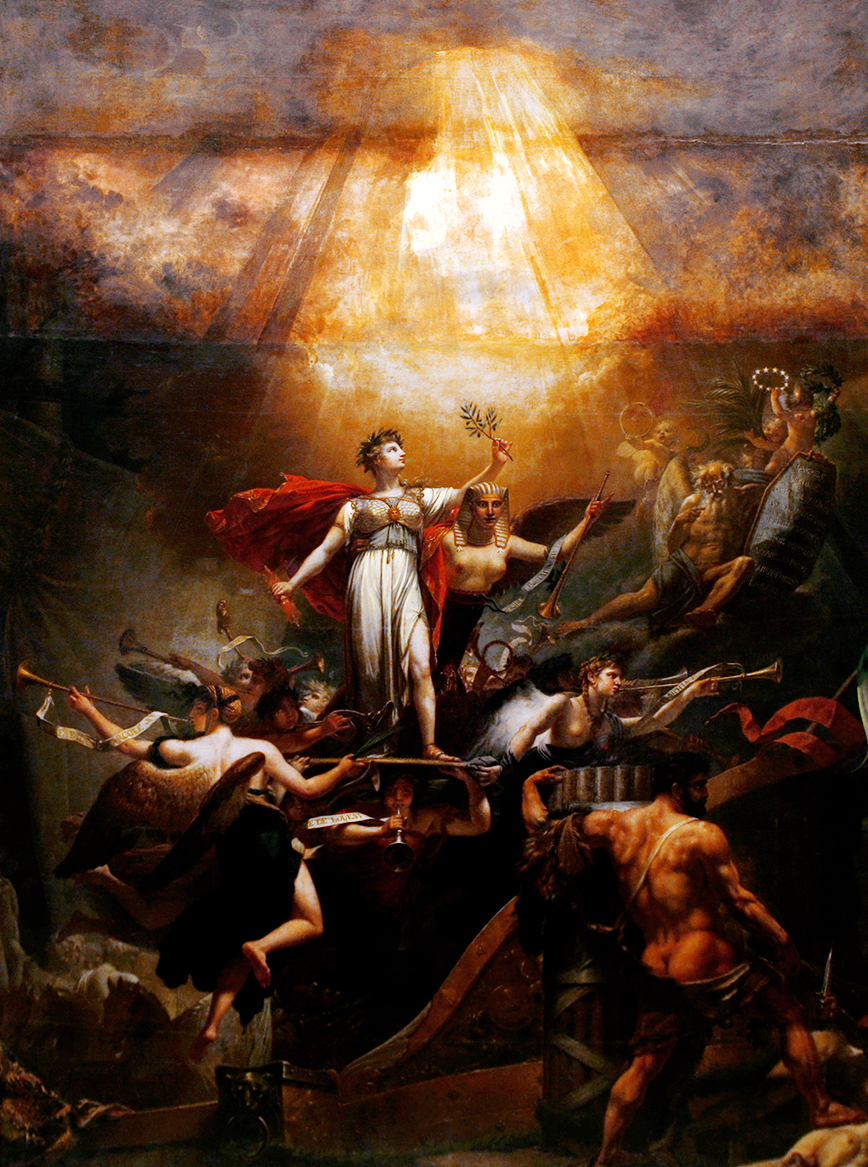 Napoleon defended the system of private property established by the bourgeois revolution / Image: public domain
Napoleon defended the system of private property established by the bourgeois revolution / Image: public domain
As the economy grew, Napoleon was able to keep the masses quiet while he consolidated his power. He paid lip service to the revolution, all while liquidating the political regime it had created. He maintained only the new economic base of capitalism, which had replaced feudalism.
After securing his position, he relied upon brute force. He built up a network of spies, re-opened the monarchist prisons, censored the press, restored the church, and embarked upon military adventures and plundering abroad. He ruled by the sword, and by 1804 had himself crowned Emperor. All of this was presented as a fait accompli and then voted on as a ‘plebiscite’ (referendum), with no freedom of discussion and no alternatives put forward.
None of these were a fundamental change to the bourgeois character of the post-revolutionary regime. He didn’t roll back the primary gains of the revolution, such as the abolition of feudal property and the redistribution of the land. What Napoleon changed was the political character of the regime. It became a dictatorship instead of a democracy, with a vast state apparatus paid for by the bourgeoisie and the masses alike.
This is the archetypal Bonapartism, which Trotsky defined as a “bureaucratic-police government which is raised over society and which maintains itself on the relative equilibrium between the two opposing camps” [7], posing as “The Impartial Arbiter” of the nation.
The strongman then rules by naked force, subordinating everyone to his executive power, without changing the fundamental class character of the regime. Often, violence is deployed against individual members of the ruling class or certain parts of it, as well as against the masses, as the regime balances between the classes.
Napoleon’s nephew, Louis Bonaparte, followed his uncle’s example almost to the letter, when he overthrew the Second French Republic by a military coup in 1851 and made himself Emperor the following year.
In The Eighteenth Brumaire of Louis Bonaparte, Marx explained how, in its struggle to put down the masses after the Revolution of 1848, the bourgeoisie was forced to dismantle all of the democratic organs of the state to avoid their capture by the ‘Reds’ of the Social Democratic Party. At the same time, the bourgeoisie conferred more and more power on the executive arm of the state, headed by the president, Bonaparte, who eventually was “raised on the shoulders of a drunken soldiery, which he bought with whiskey and sausages”,[8] as Marx put it.
Those drunken soldiers killed hundreds of workers who protested Louis Bonaparte’s coup, and arrested tens of thousands, while heavy censorship of the press was introduced.
The violence and repression was not only directed against the workers, as Marx explained: “Bourgeois fanatics for order are shot down on their balconies by mobs of drunken soldiers, their domestic sanctuaries profaned, their houses bombarded for amusement.”
The violence against individual members of the bourgeoisie and the plunder conducted by Bonaparte’s men never threatened the fundamental bourgeois nature of society. Private property relations were always maintained. Individual members of the bourgeois class were not necessarily insulated from the effects of rule by the sword, but the bourgeoisie as a whole were happy to tolerate the depredations of Louis Bonaparte if he secured ‘Order’ and an end to the period of revolutionary upheaval following 1848. [9]
Putin’s Russia
Neither Napoleon’s regime, nor that of his nephew, serve as a blueprint. When Marxists describe regimes as ‘Bonapartist’, we’re talking about an analogy with Napoleon’s regime.
There are certain parallels, for example, between Napoleon Bonaparte and Vladimir Putin, though far from an exact copy.
The restoration of capitalism in Russia in the early 1990s was a huge blow against the Russian masses. It provoked an orgy of gangsterism by the emerging Russian bourgeoisie. State assets were sold off and corruption penetrated every layer of society.
Under President Boris Yeltsin, such was the degeneracy of the capitalist class and the misery for the workers that there was a real risk of mass discontent bubbling up to the surface, as it did on several occasions. In response, the ‘democratic’ Yeltsin regime took increasingly repressive measures, even shelling the Russian Congress with the deputies still inside in 1993.
Such methods would usually be considered rather ‘authoritarian’ by liberal commentators, but interestingly, at the time Yeltsin was praised as a courageous leader and defender of democracy throughout the bourgeois press. The reason is simple: far from representing the rule of the sword over all classes, the repression carried out by Yeltsin was simply a sword in the hands of the capitalist oligarchy, albeit in particularly unstable circumstances.
 The ‘democratic’ Yeltsin regime took increasingly repressive measures, even shelling the Russian Congress / Image: public domain
The ‘democratic’ Yeltsin regime took increasingly repressive measures, even shelling the Russian Congress / Image: public domain
As the crisis continued, not only Yeltsin but the entire ruling establishment became utterly hateful in the eyes of the masses. Waves of strikes and factory occupations swept the country between 1996 and 1998, expressing a militant opposition to the restoration of capitalism. But the immense potential of this movement was squandered by the so-called Communist leaders.
The failure of the workers to overthrow the regime did not bring an end to the crisis and instability wracking Russian society. In such desperate conditions, law and order began to break down, with the kidnapping and murder of wealthy businessmen becoming common. This terrified the newly formed class of capitalist ‘oligarchs’, who had turned themselves into billionaires by looting state property.
A ‘neutral man’, someone who would protect the property of the oligarchs without being so closely linked with American imperialism and the rampant corruption in the state, was required. Putin, a former KGB agent and consummate bureaucrat, was that man. He did not impose himself on the nation at first; he was picked by a wing of the oligarchy and presented to the people as a break with the past.
Putin came to power in 1999, with promises to the oligarchs that he would protect their wealth, as long as they supported him. At the same time, he landed public blows against certain Russian capitalists by alleging corruption, all the while posing as a ‘friend of the people’.
He balanced between the contending classes, making promises and demagogic appeals to both, all while strengthening his state and security apparatus to raise it above society and dictate down to all classes alike.
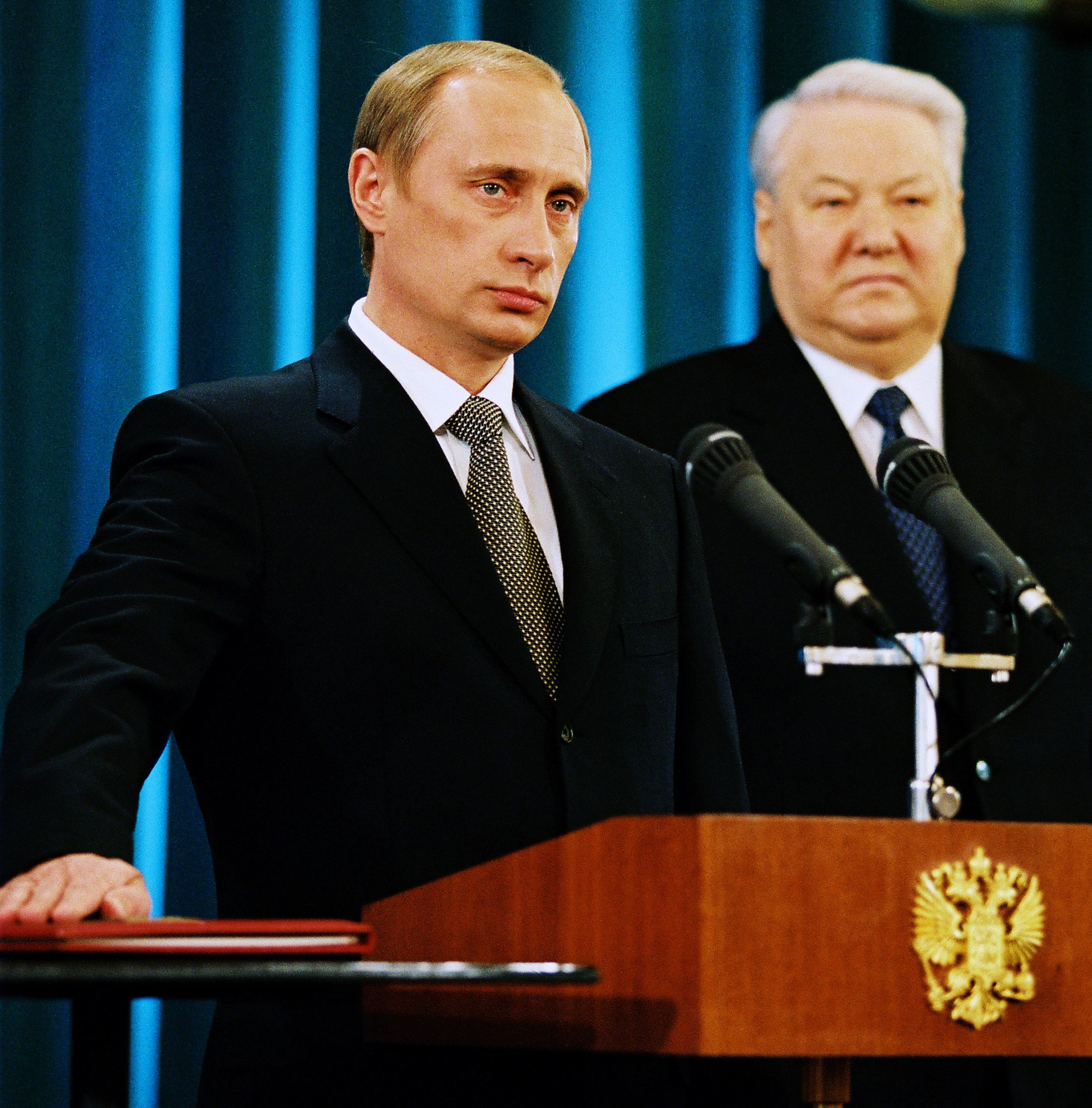 The state apparatus has been hugely strengthened under Putin / Image: Presidential Press and Information Office
The state apparatus has been hugely strengthened under Putin / Image: Presidential Press and Information Office
The class struggle had reached a certain equilibrium, caused by the mutual exhaustion of the contending classes. The bourgeoisie was weak and incapable of ruling directly, whilst the masses were incapable of seizing power. This situation had not been reached in the same way or for the same reasons as in Napoleon’s France, but the end result of deadlock between the classes was the same.
Such a situation cannot last forever. Eventually a way out of the crisis must be found, and when it cannot be found through the political rule of one class or another, it will be found by the “special bodies of armed men” who make up the state, with a ‘strongman’ leader at their head.
Shortly after his election in 2000 a leaked document was published in the Kommersant newspaper in Russia, which was a blueprint for strengthening the Russian state apparatus, to facilitate Putin’s rule.
The document, called Revision number Six, laid out plans for expanding the role of the Federal Security Service (FSB), curtailing the independence of the media, and manipulating election results using state surveillance and undercover operatives.
This has set the tone for Putin’s Russia over the last two decades. His political opponents have been arrested or even killed. He has rigged elections and ridden roughshod over the Russian constitution.
The state apparatus has been hugely strengthened under Putin as he consolidates his grip on power. The state protects the Russian capitalist class, but at the same time is not under its control. This is what makes Putin’s regime a Bonapartist one.
Trump, Johnson and Bolsonaro
But if we take some of the other regimes listed by Rachman and ask if the same analogy with Napoleon’s regime can be made, we find that it cannot.
Donald Trump, Boris Johnson, and Jair Bolsonaro did not come to power thanks to an exhausted deadlock in the class struggle. The US, Britain, and Brazil had certainly not experienced earthquakes in the class struggle such as the French Revolution of 1789, or the restoration of capitalism in Russia in the early 1990s.
In fact, at the time of their elections, in all three countries, the working class was only just getting on its feet, flexing its muscles, and preparing for a fight.
In the USA, for example, the Black Lives Matter (BLM) movement, which erupted after the murder of George Floyd by a Minneapolis police officer, was one of the largest mass movements in US history, and it happened during Trump’s presidency.
From 26 May to 22 August 2020, there were more than 7,750 BLM-linked demonstrations in over 2,240 places around the country. The force of the movement caused the Minneapolis City Council to vote to entirely disband its own police department.
Similarly, in Brazil, millions of workers went on strike on 14 June 2019 against the Bolsonaro government’s attacks on pensions and education. Demonstrations took place in 380 cities across the country. Bolsonaro’s attempts to call counter-demonstrations mustered no more than 20,000 people in the major cities.
Far from having been fought to a stalemate, the class struggle in these countries was only beginning to heat up. Therefore, to paint Trump, Johnson, or Bolsonaro with the same brush as Putin is to make a major misdiagnosis of the stage through which the class struggle is passing in each of these countries.
It is true that as individuals Trump, Johnson, and Bolsonaro were all somewhat outside of the control of their respective ruling classes. All three made demagogic appeals to the masses, while being simultaneously members of the ruling class. There were some elements of balancing between the classes in their ‘anti-establishment’ rhetoric.
But the individual motivations of leaders are only a small part of the equation. Even a desire on the part of Trump, Johnson, or Bolsonaro to actually be a Bonapartist leader is not enough to make it so. It depends on the class balance of forces in society, and through what stage the class struggle is passing.
In all three cases, the state apparatus, and in particular the armed bodies of men that make up the core of the state, remained firmly under the control of the ruling class, not the unreliable mavericks in the White House, Downing Street, or the Palácio da Alvorada.
In 2019 Boris Johnson suspended the UK Parliament. He bypassed democratic constitutional procedure in order to force through Brexit legislation, a decision which was then overturned by the Supreme Court.
Similarly, Bolsonaro stuffed his government full of military figures, including serving generals and other military commanders. He threatened that the military would conduct its own count in the 2022 Presidential election, because of an alleged bias among the judiciary and the electoral courts.
Meanwhile, Trump harassed journalists he didn’t like, including revoking their press passes, and called for an overturn of the US constitution. Like Bolsonaro, he is also accused of trying to manipulate election results.
Clearly these figures are not classical bourgeois democrats. Bolsonaro views Brazil’s military dictatorship with rose-tinted nostalgia, and Trump openly admires Putin’s Bonapartist regime. However, one man does not make a regime.
Despite their contempt for bourgeois democratic norms, Johnson, Trump and Bolsonaro all ruled within their confines. None of their regimes can be characterised as rule by the sword.
When Louis Bonaparte faced the prospect of losing the presidency of the Second French Republic by constitutional means he launched a military coup, having secured the loyalty of both the chief of staff and the majority of the ranks. Bolsonaro and Trump on the other hand, when faced with a similar problem, whipped up an armed mob of supporters, who then tried to storm government buildings. But in both cases they were swiftly and decisively crushed by the armed forces of the state, which remained firmly under the control of the ruling class.
The weakness of these ‘coup attempts’ demonstrated how little Trump and Bolsonaro were able to rely on the forces of organised violence for their support, no matter how much they wanted to. In the case of Trump’s particular adventure, it is doubtful he expected his mob of supporters to even reach the Capitol. Nor did the ‘insurgents’ themselves, judging by the way they aimlessly wandered the halls, looting vending machines and taking selfies.
To characterise a regime as Bonapartist is to deem it a dictatorship, within varying degrees of severity. This clearly does not apply to the Trump, Bolsonaro, or Johnson regimes. Nor was there any possibility of their being able to establish such a regime when they were in power. The reason for this is precisely the thing which Rachman fails to notice, or deliberately ignores: the class balance of forces in those countries.
Perspectives for Bonapartism today
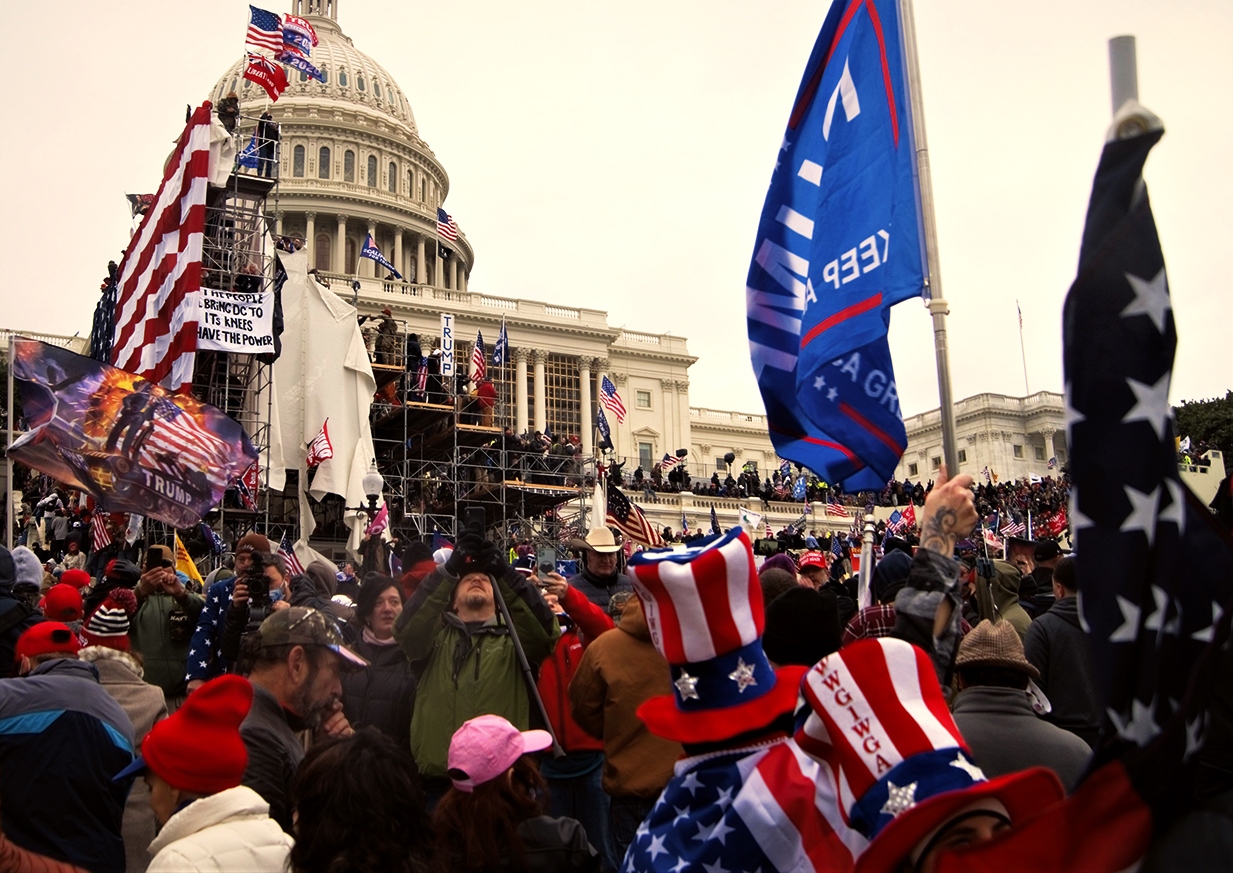 In the case of Trump’s particular adventure, it is doubtful he expected his mob of supporters to even reach the Capitol / Image: Tyler Merbler
In the case of Trump’s particular adventure, it is doubtful he expected his mob of supporters to even reach the Capitol / Image: Tyler Merbler
Gideon Rachman says we are in the ‘Age of the Strongman’ and paints a catastrophising picture of one country after another falling victim to Bonapartist leaders who threaten to snuff out liberal democracy forever.
This is an idea parroted by many of the commentators on the so-called left. But it is highly inaccurate and lazy to simply declare every government we don’t like as ‘authoritarian’, or even ‘fascist’. Further, this laziness leads to a hand-wringing pessimism, typical of those who have no understanding of the role and power of the working class. Such pessimism and sloppiness contributes nothing to our understanding of different regimes. And without understanding them, we stand no chance of overthrowing them.
In fact, the character of the present epoch on a global scale is one of revolution and counter-revolution, marked by stormy class struggle.
The class struggle is intensifying due to the unprecedented crisis in which the capitalist system finds itself. The Managing Director of the IMF, Kristalina Georgieva, said in October 2022 that the previous period of relative stability, low interest rates and low inflation is giving way to one in which “any country can be thrown off course more easily and more often”.
She added, significantly:
“We are experiencing a fundamental shift in the global economy, from a world of relative predictability... to a world with more fragility – greater uncertainty, higher economic volatility, geopolitical confrontations, and more frequent and devastating natural disasters.”[10]
The depth of this crisis is causing immense instability at all levels of society. Liberal democratic regimes are entering into crisis due to the polarisation taking place amongst the masses and splits emerging within the ruling class itself. It is these phenomena, and not simply ‘authoritarianism’, which explain the emergence of unreliable and unstable governments, such as those of Johnson and Trump. What they show is not the inevitable descent of society into Bonapartist rule, but the weakening of the ruling class and its regime.
At the same time, the crisis is provoking a sharp upsurge in the class struggle in one country after another. And in many countries all over the world the working class is undefeated and ready to fight.
Even in countries with entrenched Bonapartist regimes, like Iran for example, these are not freshly imposed dictators presiding over a prostrated and defeated working class. Rather, in the case of Iran, the regime flowed from the defeat of the 1979 revolution, from which the working class has clearly recovered.
The mass movement sparked at the end of 2022 by the murder of a young woman, Mahsa Amini, by the morality police, shook the Iranian regime to its foundations. And it is just the latest tremor in a volley of earthquakes erupting with ever greater power since 2018 under the feet of the reactionary Bonapartists who rule the country.
In Russia, Putin’s popularity was so shaken by the economic crisis which has continued since 2015, that the regime eventually stopped publishing approval polls. In these circumstances Putin stepped up repressive measures and has used the war in Ukraine to rally the population around him. These are not symptoms of a stable regime, ruling over an exhausted working class. On the contrary, they are indications that the base of the regime is being undermined by rising instability, anticipating even greater class struggle in the not-too-distant future.
The concentration of power by Xi Jinping in China also expresses precisely the same instability at the foundations of the CCP regime, which is no longer confident that it can rule using the same methods as the past.
In every country the main obstacle in the way of revolution is not the awesome power of ‘strongmen’, but the weak and cowardly leadership of the working class.
Everywhere, the ruling class is attempting to ramp up its means of repression in the face of the anger of the masses. What this shows is that all capitalist states, whether dictatorships or democracies, must defend the capitalist system, and today, every regime on the planet is less secure than in the past. But in the advanced capitalist countries at least, the ruling class is extremely wary about any moves in the direction of rule by the sword, which will provoke an almighty backlash among the masses of workers. If anything it would make a revolution more likely, not less, and the most sober representatives of the capitalist class know this.
However, this perspective should not make us complacent. Under conditions of extreme capitalist crisis on the one hand, and the lack of a revolutionary leadership of the working class on the other, all kinds of phenomena can emerge. If the ruling class cannot stabilise its rule due to the crisis, and if the workers are prevented from taking power and resolving the crisis by socialist means, it is possible that the executive could begin to raise itself above society in a Bonapartist manner.
Leon Trotsky analysed the inter-war regimes in France and Germany, and characterised them in this way. He explained that the Doumergue government in France, which came to power at the head of a ‘National Union’ government in 1934 and began to rule outside the control of parliament, was Bonapartist. As he put it: “Thanks to the relative equilibrium between the camp of counter-revolution which attacks and the camp of the revolution which defends itself, thanks to their temporary mutual neutralisation, the axis of power has been raised above the classes and above their parliamentary representation.”[11]
But while Napoleon’s regime was based on the mutual exhaustion of the classes, the ‘relative equilibrium’ underpinning the Doumergue government was based on the anticipation of revolution at a time of deep capitalist crisis. In fact, the raging storm of the economic, social, and political crisis facing that regime swamped and sank it within nine months, amidst the tumult of general strikes and threats of civil war.
The rise of stable regimes, either of the liberal democratic or the Bonapartist variety, is not on the agenda. Rather, it is instability and crisis that is on the rise everywhere.
Martin Wolf, the Chief Economics commentator at the Financial Times in Britain, has pointed to a “rise in the number of what Polity IV calls ‘anocracies’—countries with incoherent, unstable, and ineffective governments”, noting that the number of ‘anocracies’ has risen “from 21 in 1984 and 39 in 1989 to 49 in 2016.”[12]
Bonapartist regimes raise themselves up by balancing between the main contending classes when an equilibrium has been reached in the class struggle. But any equilibrium in the coming period is likely to be extremely unstable. To the extent that the storm and stress of the class struggle throws up regimes exhibiting any Bonapartist traits, these will likely be precarious and short-lived. As Trotsky put it: “Bonapartism cannot attain stability so long as the camp of revolution and the camp of counter-revolution have not measured their forces in battle.”[13]
It should also be highlighted that in the 1930s, even powerful capitalist countries like France and Germany had large peasantries. Across much of the world today the class balance of forces is tilted much more firmly in favour of the working class.
Numerically there have never been more workers on the planet than there are today, as a consequence of the proletarianisation of the peasantry and petty-bourgeoisie in many countries. According to the World Bank, for example, 56 percent of the world’s population – 4.4 billion people – currently live in cities, and the vast majority of these are workers. The social base for reaction and Bonapartism, upon which Napoleon’s regime rested for example, has been whittled away.
In the advanced capitalist countries, the peasantry has been completely eradicated. This will make it even more difficult to establish even a relatively unstable Bonapartist regime, meaning we are facing a prolonged period of revolution and counter-revolution, in which the working class will have several opportunities to take power.
How to fight Bonapartism
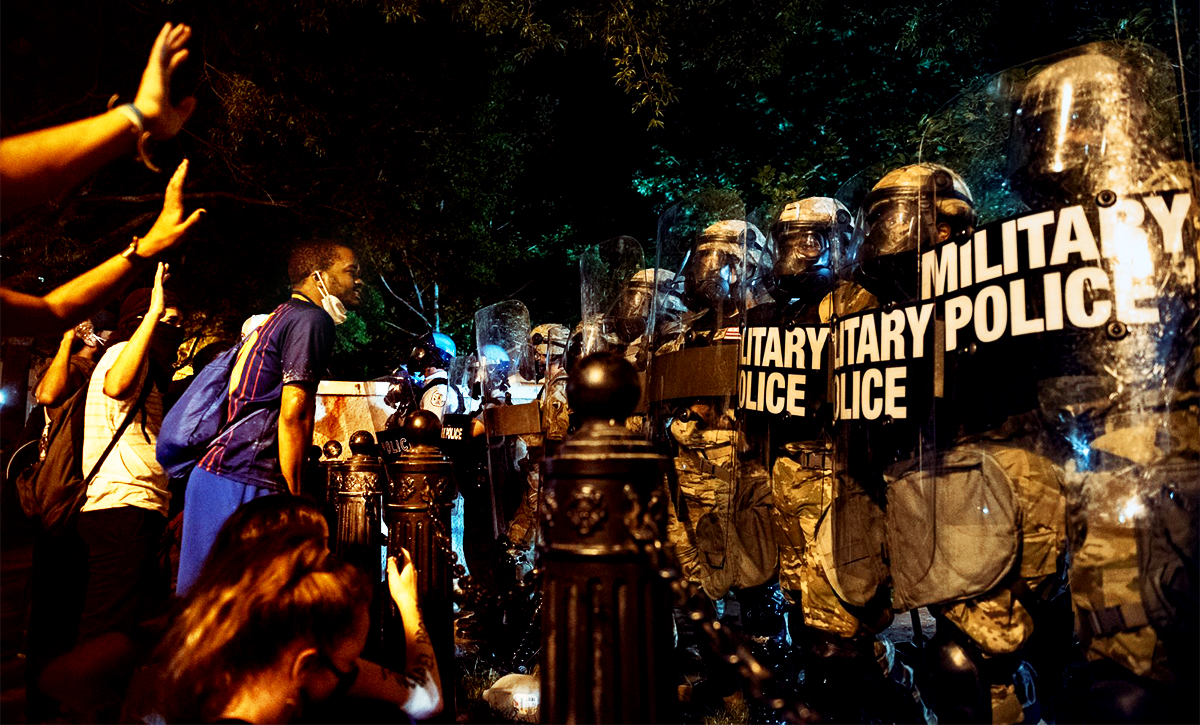 Wanting to fight any and all traces of authoritarian tendencies is a healthy instinct of many workers and young people / Image: Rosa Pineda
Wanting to fight any and all traces of authoritarian tendencies is a healthy instinct of many workers and young people / Image: Rosa Pineda
Nevertheless, wanting to fight any and all traces of authoritarian tendencies is a healthy instinct of many workers and young people. The question we have to answer is how democratic rights can be defended and won by the working class.
There are some so-called ‘Lefts’ who look towards an alliance with the bourgeois liberals for protection. Liberals, like Gideon Rachman for example, don’t like the rule of the sword, or so they claim. They prefer liberal democratic institutions, as the best way to defend private property and the interests of the bourgeoisie. Therefore, some organisations and commentators on the left conclude, we should form as broad a possible ‘united front’ against the ‘authoritarian’ or even ‘fascist’ tendencies of people like Trump, Bolsonaro, Johnson etc.
But it is precisely the direct rule of the liberal bourgeoisie that has given rise to these populist governments. It is the liberals who have carried out austerity and passed anti-trade union laws. Further, history shows us time and again that, when push comes to shove, faced with the prospect of the revolutionary overthrow of capitalism, bourgeois liberals will take their chances with a would-be dictator who promises to maintain capitalism, rather than hand power to the workers. It was on this basis that the liberty-loving Economist magazine supported the establishment of the vicious Pinochet dictatorship in Chile, for example.
Marx explains this brilliantly in The Eighteenth Brumaire of Louis Bonaparte. He shows how the bourgeois liberals, in the face of a growing wave of working-class struggle, gradually handed more and more power over to Louis Bonaparte in the name of ‘restoring order’ to society.
He writes, to sum up the conclusion of this process: “Thus the industrial bourgeoisie applauds with servile bravos the coup d’etat of December 2, the annihilation of parliament, the downfall of its own rule, the dictatorship of Bonaparte.”[14]
What this teaches us is that you cannot fight Bonapartism with liberal democracy.
The Marxist approach, when the class struggle is in a convulsive state of fragile equilibrium, is to push for the resolution of that equilibrium in favour of the working class. By breaking the state of equilibrium, we prevent a Bonapartist from being able to balance between the classes and raise himself above the class struggle using the power of the sword.
This was what developed in Russia between February and October 1917. The Kerensky regime, which took power after the February Revolution that overthrew the Tsar, was trying to become a Bonapartist regime.
The workers were on the move, but in February they had weak leaders in the Soviets who were unwilling to take power for the working class. On the other side, the bourgeoisie was too weak to hold power themselves.
Kerensky promised the world to both sides of the class struggle, manoeuvring between them and trying to rely on the army. Instead of joining the manoeuvres, or looking to the leadership of the liberals as the Mensheviks did, Lenin, Trotsky, and the Bolsheviks established an independent working-class position – summed up in the slogan: ‘All power to the Soviets’.
Lenin explained at the time: “Kerensky’s Cabinet is undoubtedly a cabinet taking the first steps towards Bonapartism.” He added that it would be “nothing short of stupid philistinism to entertain constitutional illusions”, instead arguing that it was necessary to “start a real and stubborn struggle to overthrow Bonapartism, a struggle waged on a large political scale and based on far-reaching class interests.” [15]
It was this unequivocal, independent proletarian line that tipped the unstable equilibrium in favour of the workers, and prevented Kerensky, or any other would-be dictator, from establishing a Bonapartist regime.
Bonapartism can only be fought with the independent struggle of the working class for power, not class collaboration. The appalling events taking place in Sudan as this article is being written offer an important warning in this respect.[16]
This is a lesson for workers everywhere. In Russia or China for example, Marxists have nothing in common with the liberal bourgeoisie, who wail about the lack of bourgeois democracy. Nor do we advocate class-collaborationist politics, which would have us fall into line with bourgeois liberals.
We advocate a struggle against these regimes that bases itself on the revolutionary methods and strength of the masses, led by the proletariat. Under a Bonapartist regime, such a struggle may well make use of democratic demands and slogans, but we would emphasise that these can only be secured by the working class.
This independent proletarian policy is the axis upon which a revolutionary party is built. It is the highest responsibility of Marxists to develop such a policy and build a vehicle, in the form of a revolutionary party, to take it into the workers’ movement. Only in that way will our struggle against Bonapartism, capitalism, and class society be successful.
References
[1] K Marx, F Engels, The Classics of Marxism, Vol. 1, Wellred Books, 2013, pg 3
[2] F Engels, The Origin of the Family, Private Property and the State, Wellred Books, 2020, pg 155-156
[3] ibid., pg 162
[4] The Classics of Marxism, Vol. 1, pg 5
[5] V I Lenin, The State and Revolution, Wellred Books, 2019, pg 14
[6] The Origin of the Family, Private Property and the State, pg 157-158
[7] L Trotsky, The Struggle Against Fascism in Germany, Pathfinder Press, 2019, pg 443-444
[8] K Marx, The Eighteenth Brumaire of Louis Bonaparte, Wellred Books, 2022, pg 113
[9] ibid., pg 14
[10] K Georgieva, “Navigating A More Fragile World”, imf.org, October 6, 2022
[11] H Marcuse, One Dimensional Man, Routledge and Kegan Paul, 2002, pg 128
[12] The Struggle Against Fascism in Germany, pg 577
[13] ibid., pg 444
[14] The Eighteenth Brumaire of Louis Bonaparte, pg 105
[15] V I Lenin, Lenin Collected Works, Vol. 25, Progress Publishers, 1964, pg 220
[16] See https://www.marxist.com/sudan-bloody-clash-erupts-within-counter-revolution.htm


